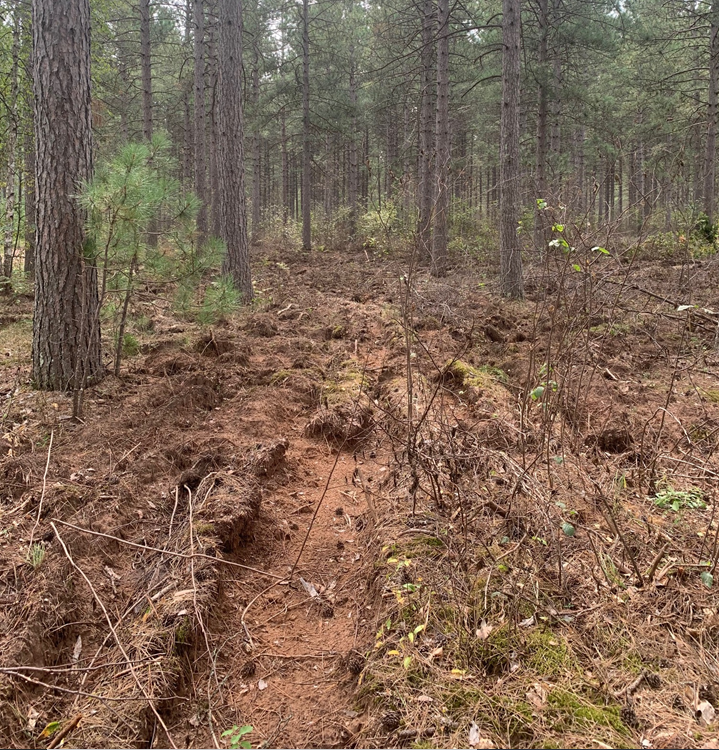Overview
The objective of this study is to assess effectiveness of Velpar treatment to control understory competition in preparation for establishing natural red pine regeneration under a mature red pine canopy. After successful establishment, the natural regeneration will be released during a regeneration harvest of the overstory.
Background:
Excessive understory competition is a major concern in natural red pine establishment work. We are looking for practical, operational methods of understory competition control. We are conducting a field trail of Velpar herbicide because:
- Velpar has recently come off of the FSC “banned” herbicide list, so it is now an available tool.
- Velpar will not harm red pine, but is effective against key target vegetative competition.
- The treatment may have less impact on turtles, other amphibians and perhaps other species than herbicide options that require use of a surfactant. Velpar does not require use of a surfactant.
- If the full prescription is successful, it may be less expensive than other site preparation and regeneration options because it may require fewer intermediate release and interplanting treatments.
As part of the study, we will compare costs to a “traditional” treatment option.
Two other case studies involving use of Velpar can be found at links here and here on the Great Lakes Silviculture Library website.
Silviculture Objectives
- Regenerate a mature red pine stand to a young stand of similar composition using natural regeneration to reduce costs.
- Establish a fully stocked red pine stand from natural regeneration.
- Reduce regeneration costs.
- Assess effectiveness of Velpar treatment to control understory competition in preparation for establishing natural red pine regeneration under a mature red pine canopy.
- Create a more complex stand structure and composition to benefit multiple wildlife species, increase resistance to insects and disease outbreaks, and increase stand resilience to climate change.
Pre-treatment stand description and condition
Stand establishment and management history
Maintained as a seed orchard for General Andrews Nursery. The stand has been periodically thinned.
Pre-treatment species composition
Pre-treatment condition was a fully stocked, 83 year old red pine stand (Table 1 and Table 2).
Table 1: Pre-treatment overstory tree volume by diameter and species. Source: MNDNR Forest Inventory Module 01 18 2023
Overstory Volume by DBH and Species | ||
Species | Avg. DBH | Volume (MBF/Ac.) |
Red Pine | 17 | 20+ |
Table 2: Pre-treatment understory tree and shrub density, stocking and average height
October 2021 Regeneration Survey Details | ||||
SPECIES | STATUS | STEMS/ ACRE | STOCKING (%) | HEIGHT (FT.) |
Hazel | Competition | 9033 | 100 | 6 |
Pin & Red Oak | Competition | 600 | 47 | 15 |
Willow | Competition | 467 | 33 | 4 |
Paper Birch | Competition | 100 | 20 | 18 |
Red Maple | Competition | 33 | 7 | 3 |
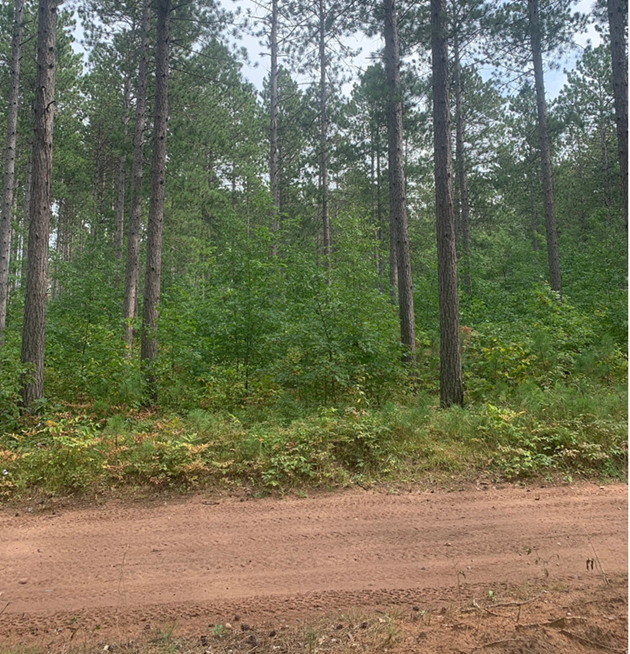
Figure 1: Adjacent untreated area across the road showing pre-treatment conditions of very heavy woody competition in the understory
Pre-treatment forest health issues
Diplodia is present on the site and is an ongoing consideration during establishment of regeneration. However, we are confident that growing conditions after overstory removal will result in full stocking and ability to recruit to larger size classes.
Landowner objectives/situation
While specific objectives vary from parcel to parcel, lands under the administration of DNR-Forestry are managed in alignment with Section Forest Resource Management Plans (SFRMP) to ensure that state forest management activities meet statewide goals for ecological protection, timber production, wildlife habitat and cultural/recreational values. The DNR assembles teams from the Divisions of Forestry, Fish & Wildlife, and Ecological & Water Resources who work with partners and the public to develop SFRMPs.
Specific objectives for red pine stands in the Mille Lacs Uplands include managing them for high productivity, high value forest products and maintain or increase stand diversity at the site and landscape level.
Silviculture prescription
TREATMENT | DATE | COMMENTS |
Chemical Site Preparation-Ground | June 7, 2022 | Initial competing vegetation control with Velpar DF herbicide at 4.2 lbs./acre. This treatment is the focus of the study. |
Site prep-Ground-Mechanical | August 2022 | Follow up surface soil scarification done by a disc harrow driving over site. The mechanical site preparation was done on this site because this stand had been maintained as a seed orchard and no seedbed preparation had been done during a recent thinning harvest. |
Regeneration monitoring | Annual |
|
Harvest - Seed tree | After acceptable regeneration size and density established. 2024 or later. | Harvest overstory and reserve selected seed trees |
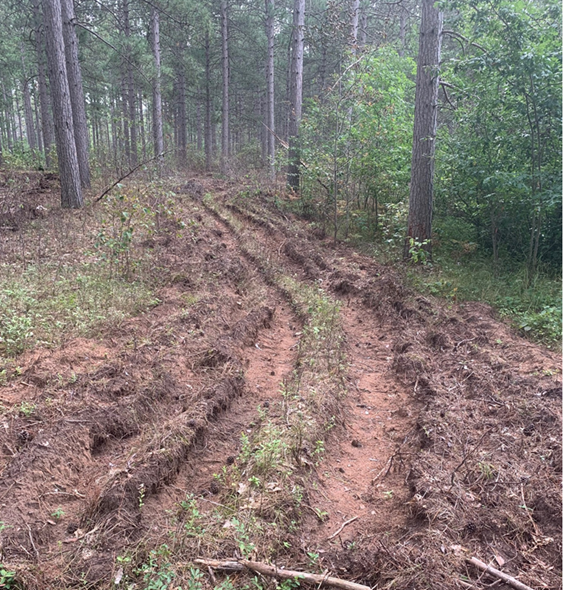
Figure 2: Ground cover conditions on Velpar and disc-harrow-treated area, and adjacent untreated area to the right on September 15 2022
What actually happened during the treatment
Initial plan was to apply Velpar in May shortly after leaf-out, but due to late winter and leaf-out application was delayed until June 7.
Initial plan for mechanical site preparation was to run over the competition with a skidder with chains on the wheels. However, the contractor advised that we probably would not get adequate scarification with this method, so we changed to a disc harrow.
The treatment was otherwise implemented as prescribed.
Post-treatment assessment
Effectiveness of Velpar chemical broadcast treatment as a tool for site prep
During our first post-treatment survey in August & September 2022, we assessed Velpar effectiveness by how much of the treated plant showed 50% or more foliar damage. If 50% or more of the plant’s foliage showed signs of wilting or are removed, than it was classified as affected by the treatment. Our conclusion is that competing vegetation was well controlled by the Velpar during the first growing season after treatment, as of September 2022. See Table 3.
Table 3: Velpar effectiveness by species and % of stems showing foliar damage, September 2022
Data collected August and September 2022 | |||
Species | Total Stems on Plots | Number of Stems with 50%+ Foliar Damage | % of Stems with 50%+ Foliar Damage |
Paper Birch | 18 | 12 | 67% |
Hazel | 292 | 183 | 63% |
Oak | 17 | 11 | 65% |
Maple | 7 | 6 | 85% |
Notes:
- 10 plots total. Plots 1-5 post-Velpar only. Plots 6-10 are post Velpar and mechanical prep.
- There was some scattered red pine regeneration present in canopy openings but none was found on sample plots.
During our second post-treatment survey on June 21, 2023, we assessed Velpar effectiveness using standard regeneration survey protocols of stems/acres and average height of regeneration and competing woody vegetation by species. We changed methodology from the initial post-treatment survey in August/September 2022, due to difficulty in identifying species and numbers of dead stems by June of 2023. See Table 4.
Table 4: Number of woody stems by species, average height and plot frequency, June 2023
Data collected June 21, 2023 | |||
Species | Stems/Acre | Average Height (feet) | Plot Frequency |
Aspen | 36 | 1.5 | 14% |
Cherry | 136 | 1.0 | 36% |
Hazel | 1,443 | 1.5 | 93% |
Juneberry | 700 | 1.2 | 71% |
Paper Birch | 0 | NA | 0% |
Red Maple | 7 | 1.0 | 7% |
Red Oak | 7 | 1.0 | 7% |
Red Pine | 43 | 1.0 | 14% |
Willow | 636 | 1.1 | 50% |
Velpar has provided excellent control of competing woody vegetation for over a year so far
The Velpar application resulted in excellent control of woody competition for over a year. While woody stems are slowly becoming re-established, it appears that it will still be awhile before woody competition again becomes an issue on this site.
In this case, we think pictures might be at least as helpful as the data in showing that competing vegetation was still well controlled as of June 21, 2023. For example, looking at the data in Table 4, 1,443 stems/acre of hazel averaging 1.5 feet tall, with a 93% plot presence might seem like a lot of competition. However, when one looks at the Figure 3 and Figure 4 pictures, it is clear that stems of competing woody vegetation are mostly small and unhealthy, and definitely not yet providing serious competition that needs re-treatment.
We will continue to periodically monitor the site to determine when additional woody competition control may be needed.
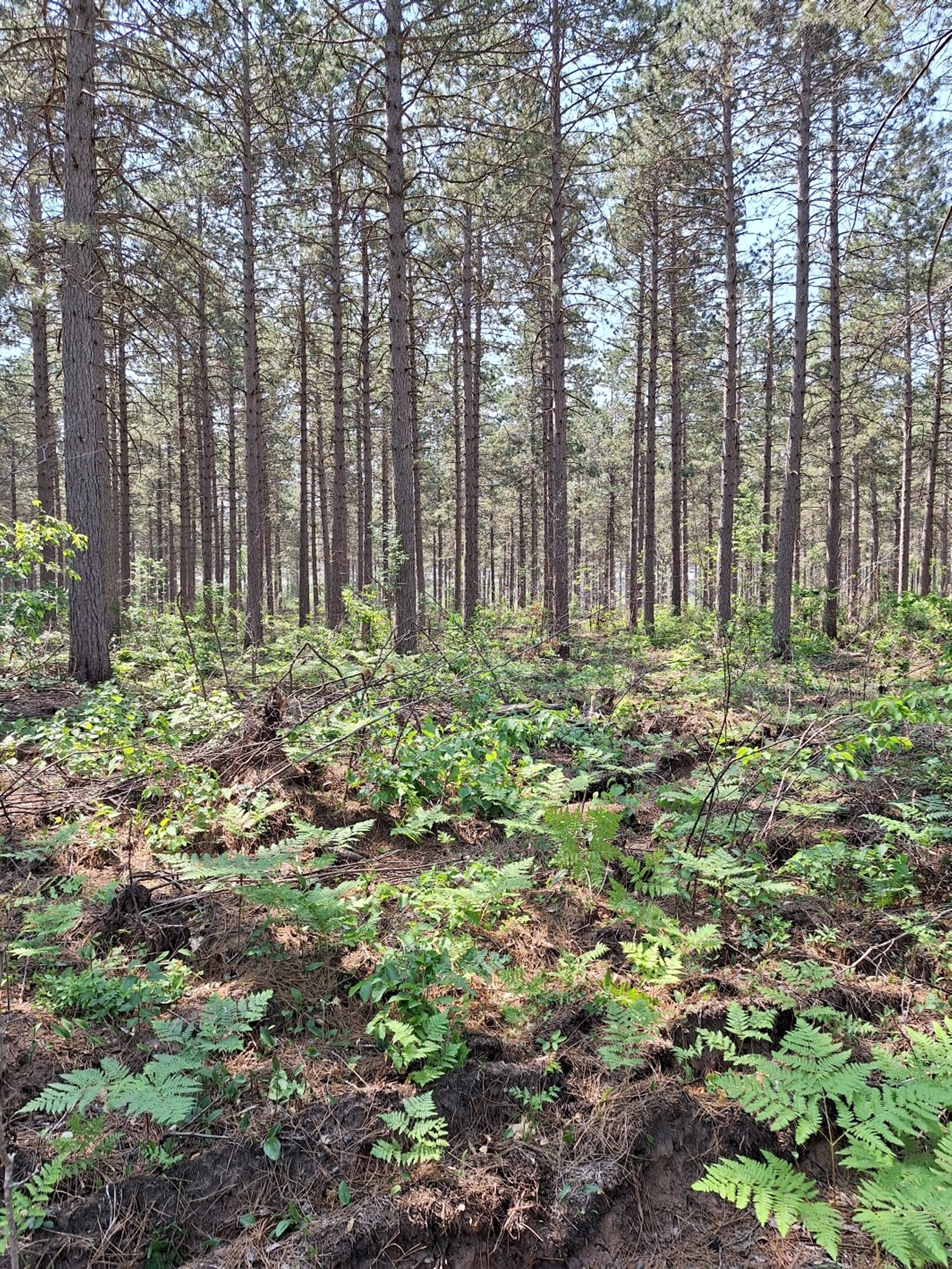
Figure 3: Woody competition is still well controlled on June 20, 2023, a year after Velpar application - most understory vegetation seen here is bracken fern
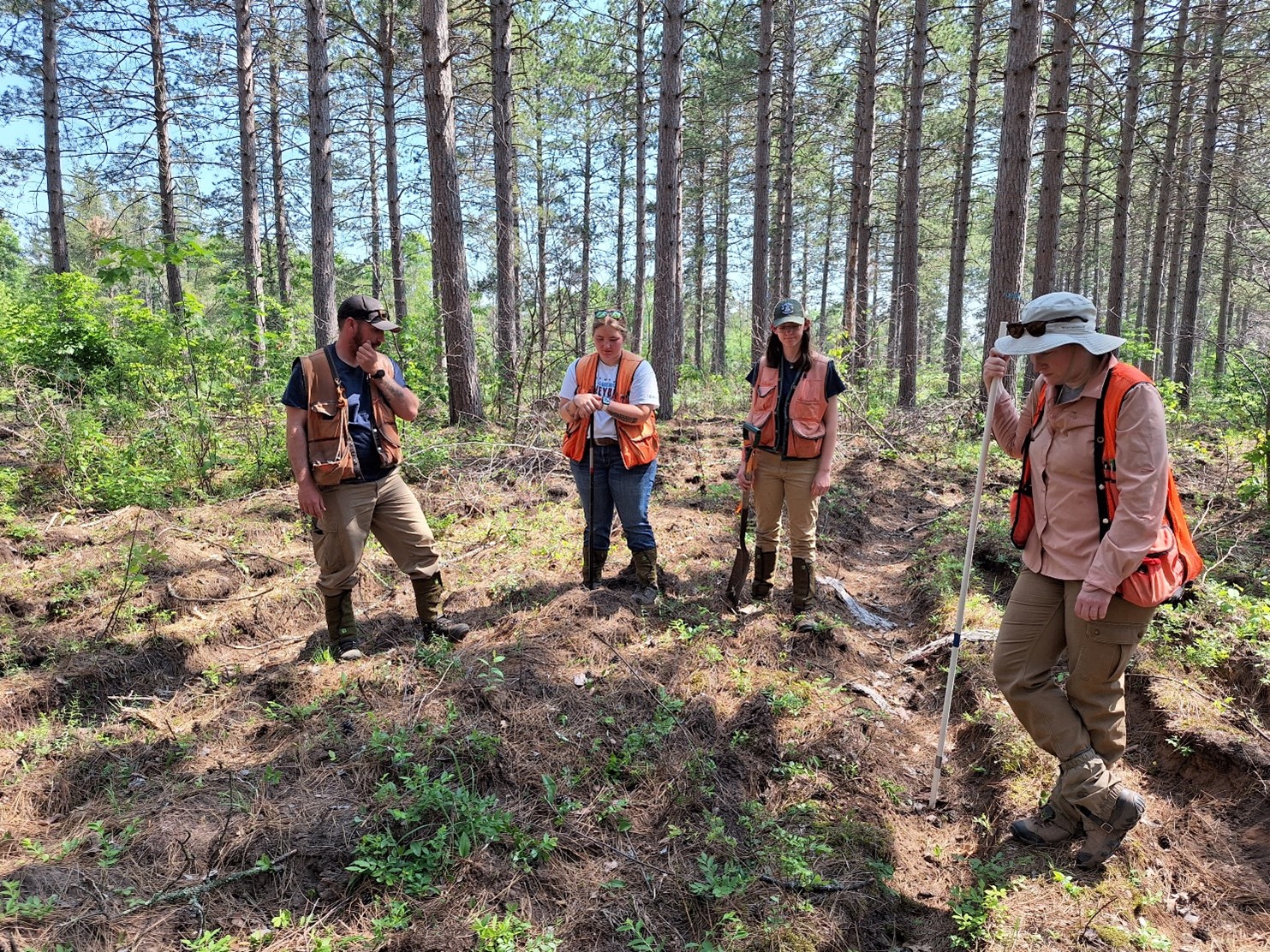
Figure 4: Foresters assess site conditions of well – controlled woody competition on June 20, 2023, a year after Velpar application
Additional silvicultural work may be needed to establish red pine seedlings
Although not the main focus of this case study, one objective of the silvicultural activities is establishment and recruitment of red pine regeneration. As of June 2023 there is very little red pine regeneration on site, and virtually none of the few stems that are there became established after the 2022 discing work to prepare a bare mineral seedbed for natural red pine seed. The most likely reason is that the 2022 red pine seed crop was very poor across the Lake States. Source: MNDNR Silviculture Program Coordinator Mike Reinikainen, personal conversation. Good red pine seed crops are produced at intervals of 3 to 7 years with light crops in most intervening years (about one year in four may have little or no seed production). Source: Silvics of North America – USDA – Forest Service
We plan to be patient on this site and wait for at least another year plus to give natural red pine a good chance to become established. There is still some bare mineral soil as a good seedbed. We may also hand seed white pine to supplement natural red pine regeneration.
Plans for Future Treatments
- Annual regeneration monitoring.
- Additional competition control as needed, which might be a brushsaw release after establishment.
- Possibly hand seed white pine to supplement natural red pine regeneration.
- Seed tree harvest after acceptable regeneration size and density established, which will be 2024 or later. If red pine regeneration is not well established, one option would be a harvest timed after seed drop in a year with a decent cone crop.
- We plan to be patient on this site and wait for at least another year plus before a final harvest to give natural red pine a good chance to become established. There is still some bare mineral soil as a good seedbed.
Costs and economic considerations
Cost comparison of Velpar treatment to the common practice of clearcut with reserves harvest, and herbicide and trenching site preparation:
One objective of the Velpar treatment was to reduce costs compared to other options. At a comparable point in regeneration establishment, it appears that the Velpar treatment has been about $104/acre (about 19%) less than a traditional practice of clearcut with reserves harvest, and herbicide and trenching site preparation. See cost data for the 2 treatment options below:
Velpar treatment costs:
Costs
Velpar application: $251/acre (2022 dollars)
Disc harrow mechanical site prep: $200/acre (2022 dollars)
Total $451/ac. (2022 dollars)
Cost of common practice of clearcut with reserves harvest, and herbicide and trenching site preparation:
Costs
Broadcast herbicide site prep. spraying: $ 128/acre
Site prep. trenching: $ 139/acre
Purchase 800 white pine seedlings/acre: $ 216/acre
Hand plant 800 seedlings/acre: $ 72/acre
Protection, budcapping $ 210/acre (3 years)
Release, broadcast herbicide $ 100/ acre
Total cost: $ 865/acre
Notes: Post-establishment tending practices may require fewer brushsaw competition release treatments at $150/acre each as compared to open site establishment.
Establishment of large numbers of irregularly spaced natural red pine - which was the goal for this Velpar treatment - could result in less need for browse protection practices. Deer simply cannot browse on all seedlings if there are overwhelming numbers, and the irregular spacing makes it more difficult for deer compared to finding and then following rows of planted seedlings.
Other notes
This site is identified as a sensitive site because of a nearby occurrence and likely habitat of a threatened animal. Velpar was okayed by Fish and Wildlife and EWR staff as a site preparation treatment option for this site as a field trial to assess its impacts.
We gratefully acknowledge the data-gathering assistance of MNDNR Forester Maddy Doucette and Forestry Intern Julia Fornengo. We are also grateful for the review and editing assistance of MNDNR Silviculture Program Consultant Mike Reinikainen.
Summary
Velpar has provided excellent control of competing woody vegetation for over a year so far
The Velpar application resulted in excellent control of woody competition for over a year. While woody stems are slowly becoming re-established, it appears that it will still be awhile before woody competition again becomes an issue on this site.
Cost of the Velpar treatment has been about 19% less than the common practice of clearcut with reserves harvest, and herbicide and trenching site preparation
One objective of the Velpar treatment was to reduce costs compared to other options. At a comparable point in regeneration establishment, it appears that the Velpar treatment has been about $104/acre (about 19%) less than a traditional practice of clearcut with reserves harvest, and herbicide and trenching site preparation.
Additional silvicultural work may be needed to establish red pine seedlings
Although not the main focus of this case study, one objective of the silvicultural activities is establishment and recruitment of red pine regeneration. As of June 2023 there is very little red pine regeneration on site, and virtually none of the few stems that are there became established after the 2022 discing work to prepare a bare mineral seedbed for natural red pine seed. The most likely reason is that the 2022 seed crop was very poor across the lake states.
We plan to be patient on this site and wait for at least another year plus to give natural red pine a good chance to become established. There is still some bare mineral soil as a good seedbed. We may also hand seed white pine to supplement natural red pine regeneration.
A final takeaway is that in the future, it would be ideal to time the Velpar application and disc trenching with a good red pine cone crop, which can be forecasted a year in advance while the cone and seed are maturing, barring weather interference.
Foresters can use binoculars or spotting scope to identify immature cones or “conelets” of dominant and codominant trees starting in late August of the year before cones mature. When one looks up and sees no conelets at all, means that next year’s crop will be very poor.
